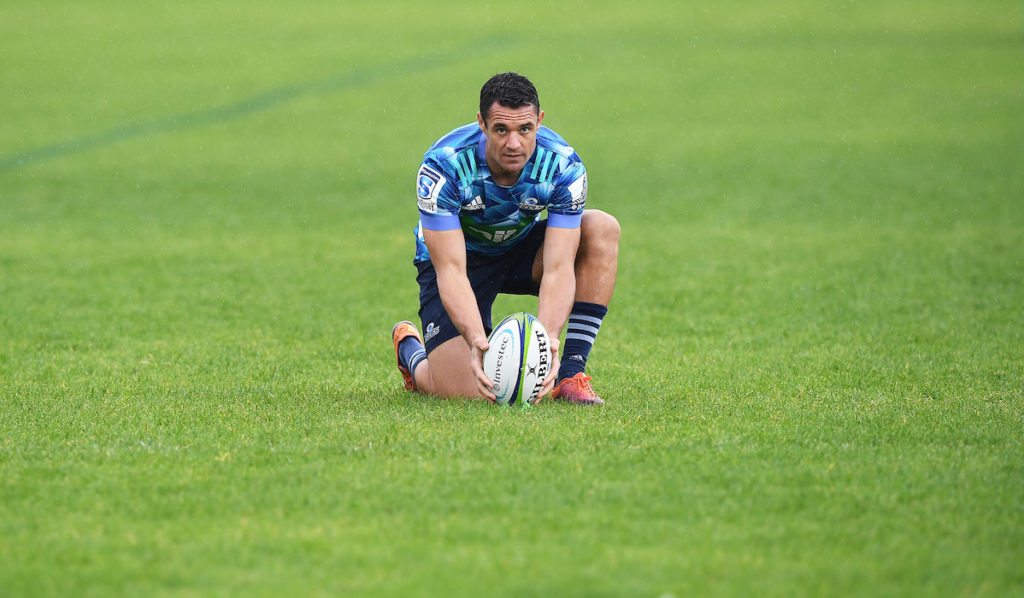What’s the next frontier in rugby? A 40-year-old Test flyhalf, I hope, writes RYAN VREDE in the latest SA Rugby magazine.
READ: What’s in our latest issue?
OK, now that I’ve got your attention with the introduction, let me explain. I’ve always been interested in how science and technology can contribute to slowing down the aging process. But I started to think about this more seriously in the last couple of years after watching the docu-series Tom vs Time.
It tracked superstar NFL quarterback Tom Brady, then 40, in his bid to continue to play at an elite level in arguably the most demanding position in all of sports. The training (physical and mental), nutrition and recovery regimen – featuring special pyjamas whose manufacturer claims it helps muscle recovery – was astounding. I understood how he could still perform at the levels he did.
Brady led the New England Patriots to the Super Bowl later that year and, despite losing, his performance suggested he had more in the tank at an age where most QBs stalled or were running on reserve. Earlier this year, Brady signed a multimillion dollar, one-year deal with the Tampa Bay Buccaneers, with a second-year option clause.
He has said he wants to play until he is 45. I want him to get there, not because I’m invested in Brady’s dreams, but because I want him to shatter the belief that pro athletes have a shelf life that usually expires in their early to mid-30s, depending on the sport. Simply put, I want science to win more than I want Brady to.
Then when Dan Carter, in recent conversation with Ireland flyhalf Johnny Sexton, said he believed he could probably play at a high level until 40 provided he got enough time off, it got me thinking how dope it would be to see a 40-year-old Test flyhalf.
‘So, if it’s [time off] used wisely and you keep training, and as long as your motivation upstairs is still there, I can’t see why you can’t play longer than you thought you might,’ Carter said.
He wasn’t talking about playing Test rugby, but that doesn’t mean it isn’t possible. If achieved, this would undoubtedly be a more significant feat than Brady’s. QBs have a dedicated team of blockers deployed to ensure he doesn’t get hit. They take no contact in training and their regular season lasts 16 games (add a couple of weeks if the team goes all the way to the Super Bowl).
Not only are flyhalves not shielded from the opposition’s 100kg-plus hitmen, they often wilfully run directly at them. For an international flyhalf, a season can last from February until November, with matches scheduled for most weeks in that period.
The mental and physical demands are immense and are central to the reason there has never been a Test flyhalf who has played beyond 39 (Argentina pivot Hugo Porta, who did so in 1999).
I’ve been reading sport’s journalist Jeff Bercovici’s book Play on: The Science of Elite Performance at any Age, in which he profiles many successful older athletes and delves into their winning strategies. It has been revealing and forced me to challenge my own agism pertaining to elite athletes.
In an interview with the New York Times, Bercovici said: ‘A lot of what I learned in researching this book had to do with the evolving understanding of the dangers of fatigue and the effect that fatigue plays in promoting injuries and decreasing an athlete’s performance. When you look at the athletes who are performing better later in their careers, a lot of it is because they have a better understanding of how not to accumulate fatigue over the course of a season or a training period.’
This is the biggest obstacle in the path of the 40-year-old Test flyhalf. The season is incredibly long and the game incredibly abrasive both physically and mentally. Furthermore, the off-season is almost non-existent. None of this will change in the near future because the game’s corporate leaders value quantity over quality.
But there’s hope that, as science advances and the suits see the sense in a compressed season, a 40-year-old Test flyhalf will one day be a reality. What a beautiful thing that would be to watch.





